The Origins and Links to English Freemasonry – Part 2
The Regius Manuscript
The oldest of the known manuscript charges of Freemasonry, written about 1390, is in the old English of Chaucer’s time, and is difficult to read.
This old manuscript contains 15 articles and 15 points, of which the following is a free transcript, care being taken to convey the spirit of the thought rather than literary accuracy:
Articles
(1) The Master must be a trusty man, an honourable and impartial medium between the lords who hire and the operatives who labour.
(2) He must be punctual in his attendance at the assemblies.
(3) He must take no apprentice for a term of less than seven years.
(4) He must take no apprentices, save the free and well born.
(5) He must take no mutilated person for an apprentice.
(6) He must not take Craftsman’s wages for apprentices’ labour.
(7) He must take no immoral or depraved person for an apprentice.
(8) Finding an employee incompetent, he must immediately discharge him.
(9) He must undertake no work that he cannot finish.
(10) No master shall supplant another in his business.
(11) He shall not require his workmen to work by night, except in search of knowledge.
(12) He shall speak no evil of his fellows’ work.
(13) He must instruct his apprentices in the Masonic science.
(14) The Master shall take no apprentices for whom he has not sufficient labour.
(15) He shall not compromise with his fellows in their sins for any profit.
Points
(1) The Mason must love God and his brethren.
(2) He must work diligently in working hours that he may lawfully refresh himself in the hours of rest.
(3) He must keep the secrets of the brethren with fidelity.
(4) He must be true to the Craft.
(5) He shall receive his wages without murmuring.
(6) He shall not turn a working day into a holiday.
(7) He shall not carnally lie with a brother’s wife.
(8) He must be just and true to his Master and brethren in every capacity.
(9) He shall treat his brethren with equity and in the spirit of brotherly love.
(10) He must live peacefully and without contention with his brethren.
(11) Seeing a brother about to err he must admonish him with kindness.
(12) He must maintain the general regulations of the Craft.
(13) He shall commit no theft or succour a thief.
(14) He must be steadfast to these laws and to the laws of his country.
(15) He shall submit to the lawful penalty for whatever offences he may commit.

Fyftene artyculus þey þer sowȝton, and fyftene poyntys þer þey wroȝton. (Fifteen articles they there sought and fifteen points there they wrought.) —Regius MS, ca. 1425–50.
IMAGE LINKED: wikimedia Attribution 4.0 International (CC BY 4.0)
It has been suggested that Masonic symbols existed to maintain our secrecy, however it is much more likely they were employed at the time because very few people were literate.
It should be remembered that in general only the clergy could read and write and many of them were employed in printing the Bible.
This was usually carried out in the crypt of a church and even in recent times the shop steward in the print is referred to as the ‘Father of the Chapel’.
In earliest times ritual would have been learnt by recitation and handed down from one to another as the ‘indict, carve, mark, engrave or otherwise them delineate’ rules would have been strictly adhered to.
Gradually symbolism would have been employed and eventually of course, ritual books.
The practice of remuneration according to skills, and the recognition tokens and words employed during the building of King Solomon’s Temple, applied in exactly the same manner by our operative Brothers who built churches and cathedrals during the Middle Ages here in Britain and Lodges were in many ways the forerunners of today’s Unions.
As I concluded in my other talk on the ‘History of German Freemasonry’, Masons were a nomadic lot; travelling around wherever their work took them, and many thousands were employed in the building of any given cathedral.
As such, it would have been impossible to identify who was entitled to what so the system of recognition would have been the only fair way of ensuring they received their correct remuneration. I assume there must have been many overseers, or Friday pay day would have run into Monday!
Incidentally – one piece of useless information: The next time you are in the Grand Temple looking from the East to the West, up in the coving there are depicted the figures of Euclid and Pythagoras. Euclid is holding a scroll on which are depicted, or so I thought, symbols or hieroglyphics – wrong! They are the obtuse, equilateral, and acute angles. I asked the question of one of the knowledgeable guides – he didn’t know but two hours later after trawling through the library he came back and informed me. So now you know!

The Regius, or Halliwell, Manuscript
IMAGE LINKED: wikimedia Attribution 4.0 International (CC BY 4.0)
A brief history of the Regius MS
The Regius Manuscript, or Poem, also known as ‘The Halliwell Manuscript’, was part of a collection of 12,000 volumes presented to the British Museum [Treatise on Geometry and Masonry] in 1757, by King George II, which came to be known as the Royal Library. It was written by hand on 64 pages of vellum an was entered under in the catalogue as:
No. 17 A-1 under the title, ‘A Poem of Moral Duties: here entitled Constitutiones Artis Gemetrie Secundem’.

James Orchard Halliwell – Lovell Reeve, Portraits of Men of Eminence in Literature, Science and Art, vol. I, London, 1863.
IMAGE LINKED: wikimedia Attribution 4.0 International (CC BY 4.0)
The earliest of the old Constitutions. It is in poetic form, and was probably transcribed in 1390 from an earlier copy.
It was published in 1840 by James 0. Halliwell-Phillipps, and again in 1844, under the title of The Early History of Freemasonry in England.
The Masonic character of the poem remained unknown until its discovery by Halliwell, who was not a Freemason, because it was catalogued as ‘A Poem of Moral Duties’.
It is now more commonly known as the Regius Manuscript because it formed part of the Royal Library commenced by Henry VII and presented to the British Museum by George II.
The contents were mistaken until Halliwell-Phillipps mentioned it in his paper on the Introduction of Freemasonry into England, read before the Society of Antiquaries during the session of 1838 to 1839.
Two small editions of the transcript of the poem were published. The first edition contained a facsimile reproduction of four lines of the manuscript, the second similarly reproduced the first page, and he also gave a glossary which with the transcript was published in a veritable gem of a work in 1889, Spencer and Company with an introduction by Brother H. J. Whymper.
Halliwell-Phillipps pointed out that the writer was probable a priest, this evidently from the allusions in line 699 (page LI).
He also calls attention to line 143 (page XI), as intimating that a still older manuscript was in existence when the poem was written.
The writing is done in a neat but characteristic style of the early period and in these modern days far from familiar to us, the English of that generation was also very different from that of our time.

Photograph of Sir w:Edward Augustus Bond – circa 1890
IMAGE LINKED: wikimedia Attribution 4.0 International (CC BY 4.0)
The manuscript was dated to 1390, which was supported in the by such authorities as Masonic researcher and Editor of the Freemason magazine Adolphus Woodford, and William James Hughan.
The dating of Edward Augustus Bond, the principal librarian and curator of manuscripts at the British Museum, to fifty years later was largely side-lined at the time.
However, modern analysis confirmed Bond’s dating to the second quarter of the fifteenth century, and placed its composition in Shropshire.
This dating leads to the hypothesis that the document’s composition, and especially its narrative of a royal authority for annual assemblies, was intended as a counterblast to the statute of 1425 banning such meetings [see Andrew Prescott, The Old Charges Revisited, 2006] Hughan believed that the manuscript had been written by a priest.
This manuscript itself is an anonymous treatise in Middle English prose which recounts the history of geometry citing Euclid, and thus equates this with masonry, through the Bible down to King Æthelstan.
Foot Notes
Sources
[Text sources: Mackay’s Encyclopaedia | ‘The Old Charges and What They Mean to Us’, Bro. H.L. Haywood, AQC vol. VII]
<Image of James Orchard Halliwell-Phillipps by Ernest Edwards – Lovell Reeve, Portraits of Men of Eminence in Literature, Science and Art, vol. I, London, 1863. Public Domain.>
Read the full translation of the Regius Poem, with parallel text, here: Pietre-Stones, The Regius Poem, Parallel text with introduction
See the digitised manuscript at the British Museum http://www.bl.uk/manuscripts/FullDisplay.aspx?ref=Add_MS_23198
https://freimaurer-wiki.de/index.php/Regius-Poem
https://en.wikipedia.org/wiki/Masonic_manuscripts#Halliwell_Manuscript,_or_Regius_Poem
Andrew Prescott, The Old Charges Revisited, from Transactions of the Lodge of Research No. 2429 (Leicester), 2006, Pietre-Stones Masonic Papers
ends..
Article by: Barry Stedman
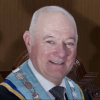
Barry was initiated into Freemasonry in Tudor Lodge 6947 UGLE, and was Master in 1995 and served as Master in other craft lodges and PZ in HRA. He is also a member of the Essex Provincial Oration team (based in England).
Barry works in TV and shot a video with Jim Davidson OBE ,Chelsea Lodge 3098, promoting for the RMBI Prince Edward, Duke of Kent Court at Stisted (Essex, England).
The Regius Poem
or Halliwell Manuscript
The Regius Poem, also known as the Halliwell Manuscript, is a long series of rhyming couplets that make up what is thought to be the earliest of the Old Charges of Masonry.
It was discovered in the British Museum by James O. Halliwell in 1838. While sometimes thought to have been written during the reign of King Athelstan (924-940 A.D.), the document actually dates to the late 14th century.
Whether it is a derivative work based on a separate manuscript from Athelstan’s time is unknown. However, the Regius Poem is the cornerstone of the Legend of York, which is important in Masonry even today.
This manuscript also outlines how Masons should act toward each other and toward the civil magistrate. It also talks about the history and philosophy of the order of Masons.
Any Mason interested in the history of the Art should read this document and see how it compares to the various rules their grand lodges lay out for government of a lodge.
Recent Articles: by Barry Stedmen
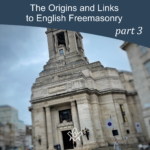 Origins and Links to English Freemasonry - Part 3 Quasi-Masonic societies - are the highly secretive Skull and Bones the real Illuminati? |
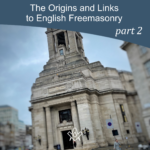 Origins and Links to English Freemasonry - Part 2 The Regius MS & Deciphering the Oldest Charges |
 Origins and Links to English Freemasonry - Part 1 Unexpected links between the Freemasonry of today with the original Operative builders. |
Recent Articles: masonic history
 Protestantism and Masonic Influence in Brazil Discover the untold story of how Freemasons helped Southern Americans immigrate to Brazil post-Civil War, fostering economic and educational growth in Santa Bárbara d’Oeste and Americana. Learn about their pivotal role in establishing Protestant churches and ensuring the secularity of the Brazilian State amidst a Catholic-dominated society. |
 Explore the proper use of the sacred word in Brazilian Freemasonry through an analysis of Masonic literature and Bible translations. Uncover the errors in pronunciation and the need for corrections to maintain liturgical coherence in rituals. Discover insights on Masonry, rituals, and the Hebrew word Boaz. |
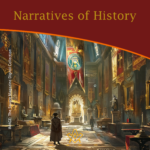 Narratives of History |
 A Very Royal Sesquicentenary |
 Unveiling the Enigma: Discover the Royal Society's Legacy and its Impact on Science. Delve into the fascinating history of the Royal Society, the prestigious UK academy shaping scientific progress since 1660. Explore its pivotal role in advancing knowledge, fostering collaboration, and unlocking the secrets of the universe. Prepare to be amazed! |
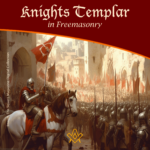 Knights Templar in Freemasonry Uncover the Mysteries of the Knights Templar in Freemasonry! Delve into the intriguing world where chivalry and symbolism intertwine. Discover the captivating rituals and ancient secrets behind the Knights Templar Masonic Orders. Explore the historical connection and delve into the enigmatic narratives that continue to fascinate enthusiasts today. Unveil the hidden truths now! |
 The Royal Arch stands as the rainbow of promise in the Ritual; it stands as the promise of the resurrection; of that which was lost and that it shall be recovered. The question arises as to whether the Master's Word was originally communicated in the Third Degree? On this point there is some diversity of opinion. Originally published in 1915, this insight into the Fourth Degree – the Holy Royal Arch – is as relevant today as it was over 100 years ago. |
 Unveiling the Mysteries of Druidism: Discover the Intriguing Connection with Freemasonry. Explore the ancient spiritual practice of Druidism and its fascinating ties to the enigmatic world of Freemasonry. Delve into the shared symbolism and rituals that have captivated minds for centuries. Unlock the secrets of these intertwined traditions today! |
 Uncover the legacy of freestone masons and their pivotal role in crafting medieval cathedrals. Discover the artistry behind their techniques, the hierarchy within their craft, and the enduring impact of their intricate carvings. A deep dive into the world of these master craftsmen awaits you! |
 Unearth the intriguing journey from Vincha Culture to Freemasonry. Discover how ancient building methods intertwine with modern Masonic philosophies. This exploration will shed light on the fascinating link between the Serbian term "shestarenye" and the symbolic significance of the compass in Freemasonry. |
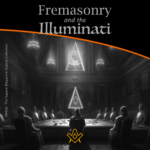 Freemasonry and the Illuminati Unravel the enigmatic world of Freemasonry and the Illuminati in our latest exposé. Dive into centuries-old mysteries, debunk conspiracy theories, and discover the truth behind these elusive societies. Are they puppet masters or mere myths? Join us as we dissect history and fact from fiction. |
 The Île des Templiers, or “Island of the Templars” lies within a leafy park in Paris. The execution site of Jacques du Molay, the last Grand Master of the Knights’ Templar bears a plaque with the epitaph ‘A cet endroit / Jacques de Molay / Dernier grand maître / de l'ordre du temple / a été brûlé le 18 Mars 1314’ (‘In this location / Jacques de Molay / Last grand master / of the order of the temple / was burned on 18 March 1314’) |
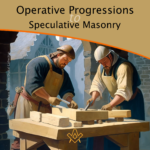 Operative Progressions to Speculative Masonry Both Operative and Speculative Masonry are an important part of the modern fraternity of Freemasonry, which combines elements of both traditions. Today, Freemasonry is a fraternity that is open to men of good character, who are interested in personal development and in making a positive contribution to their communities. |
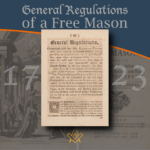 General Regulations of a Free Mason, 1723 General Regulations of a Free Mason as contained in Anderson's Constitutions of the Freemasons, published 1723. the Regulations are of great historical interest. Compiled by George Payne, the second Grand Master of the Premier Grand Lodge of England, they were printed in 1722/3, thus published just over five years after the formation of the Grand Lodge 1717. |
 The Genesis of the 1723 Book of Constitutions 2023, marks the three hundredth anniversary of the publication of the first printed Book of Constitutions of the Grand Lodge formally established in London two years previously. This is an anniversary whose significance extends beyond freemasonry. A paper by Andrew Prescott |
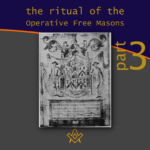 The Ritual of the Operative Free Masons - P3 Existing Operative Free Masons. The ritual I am about to refer, is that of "The Worshipful Society of Free Masons, Rough Masons, Wallers, Slaters, Paviors, Plaisterers, and Bricklayers." By Thomas Carr, M.D., P. M. Honorary Member of the Guild of Operative Free Masons |
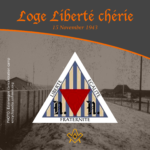 Liberté chérie was a Masonic Lodge founded in 1943 by Belgian Resistance fighters and other political prisoners at Esterwegen concentration camp. It was one of the few lodges of Freemasons founded within a Nazi concentration camp during the Second World War. |
 The Ritual of the Operative Free Masons - P2 If anyone doubts the fact that the formation of Speculative Free Masonry was due to and based upon Operative Free Masonry, it is quite easy to convince him of his error if he will only study the first Book of Constitutions. By Thomas Carr, M.D., P. M. Honorary Member of the Guild of Operative Free Masons |
 In 1881, Freemasonry rose from the ashes of a fire in the mining town of Kokomo, Summit County, Colorado. Corinthian Lodge No. 42, along with Kokomo, no longer exists but it holds the record of having been – at an elevation of 10,618 feet – the highest Masonic Lodge in the USA. |
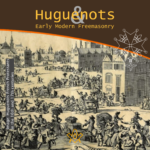 The Huguenots and Early Modern Freemasonry The Huguenots influence in the development of early modern Freemasonry at the time of the formation of the Grand Lodge in London around 1717 / 1723. |
 November is a month of reflection – perhaps due to the fact that we are getting close to the years' end – but also because Remembrance / Armistice Day (11 November) is a significant date in most countries' diaries. |
 Speculative Freemasonry, as practise by Grand Lodge of England, was officially born just over three hundred years ago, is today an international organisation, counting over six million members. It has been subjected to persecution, suppression, and abolition throughout its history. In its infancy, only a couple of decades after its official birth, it had already become a target. |
 The Ritual of the Operative Free Masons - P1 The original paper was written, first, to prove that Speculative Free Masonry was derived from Operative Free Masonry; second, to give some account of the Operative Free Masons, of their Ritual, and of their customs. By Thomas Carr, M.D., P. M. Honorary Member of the Guild of Operative Free Masons |
 American Fraternalism in the 19th and Early 20th Centuries The late 19th and early 20th centuries in the United States has been called the "Golden Age of Fraternalism." How did this come about and why was the idea of joining a fraternal organization so popular? We will explore this question and examine the regalia used by many fraternal organizations in this period. |
 Societas Draconistarum, meaning "Society of the Dragonists"– was a chivalric Order for selected nobility, founded in 1408 by Sigismund von Luxembourg, who through marriage became the King of Hungary (1387–1437) and later Holy Roman Emperor. The Order was fashioned after the military orders of the Crusades, requiring its initiates to defend the cross and fight the enemies of Christianity, in particular the Ottoman Empire. |
 The Perjured Free Mason Detected Was Samuel Prichard a perjured individual, or simply a misguided Freemason? Prichard's book "Free Masonry Dissected" published in 1730, is now used by many Masonic historians as a source of reference with regards to the introduction of the third degree into the Craft. But at the time it was published in 1730, it was not so well received by members of the Grand Lodge of England. |
 17th century and the Holy Royal Arch This article focuses on a period of transition between a point in time when we can safely and historically identify the first formation of what could be called as the ‘Royal Arch’ and the historical events that have preceded it. |
 Most Freemasons have heard the terms 'Operative' and 'Speculative' Masons, and this article helps to understand the difference: |
 Roberts' Constitutions of Freemasonry 1722 Published a year before Anderson's Constitutions, The Old Constitutions Belonging to the Ancient and Honourable SOCIETY OF Free and Accepted MASONS. Originally printed in London England; Sold by J. Roberts, in Warwick-Lane, MDCCXXII.(1722) |
 From 'Songs of religion and life', 1876 by John Stuart Blackie (1809-1895) |
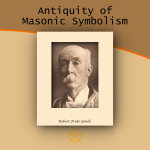 On the Antiquity of Masonic Symbolism Is the Symbolism of Masonry an inheritance derived from the old Masons who flourished before the era of the Grand Lodges (1717); or has it been borrowed from the Rosicrucians or others, after 1717? |
 Mason's Marks – from Egypt to Europe? Mason's marks have been a source of intrigue, not only to Freemasons but to historians and archaeologists. The use of simple pictograms have been employed for millennia by artisans to identify their work. But where did they originate and why? |
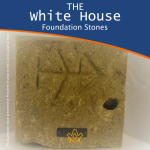 The White House Foundation Stones Further to the articles in our series on the history of the stone masons, we have a rather intriguing addition. During the 1950's renovation of the White House, President Truman retrieved more than 100 stone blocks with stonemasons marks. |
 What the Goose and Gridiron Tavern is in the ancient annals of London Freemasonry, The Green Dragon Tavern is to the memories of the Free-mason, of Boston and New England. |
 Auschwitz concentration camp: video photo article taken in 2013 |
 There are two things of importance happening this day - 27 January |
 Two approaches regarding the understanding of Freemasonry |
 Masonic Research in England c1930 An article which appeared in an American Masonic magazine, c1930 and which was reproduced in England, provoking a little controversy. |
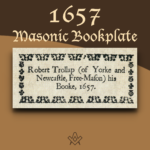 Masonic bookplates the ‘Brethren’s spiritual coats of arms and marks’ |
 The Unlawful Societies Act of 1799 Rebellious Freemasons and the 21st century |
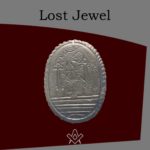 In 1912, Sarah Dowd of Dromore, Ireland, found a Masonic jewel dated 1517 - a date two hundred years before the establishment of Grand Lodge... |
 Freemasonry and Fascist Regime Interesting speech by the famous historian Prof. Aldo A. Mola, who links the fascist regime with the Masonic Associations. |
 Was famous Russian poet Alexander Pushkin a Freemason? And if so, was he a member of the lodge ‘for which all the lodges in Russia were destroyed’? |
 The Importance of Masonic Research Why is accurate - or authentic - Masonic research so important? The importance of making a daily advancement in Masonic knowledge is something that The Square is passionate about promoting. |
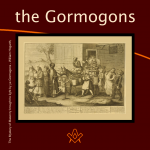 The Antient Noble Order of the Gormogons had a brief existence in the eighteenth century; they left few records or accomplishments, |
masonic knowledge
to be a better citizen of the world
share the square with two brothers

click image to open email app on mobile device
Tubal Cain
Masonic Aprons NFT
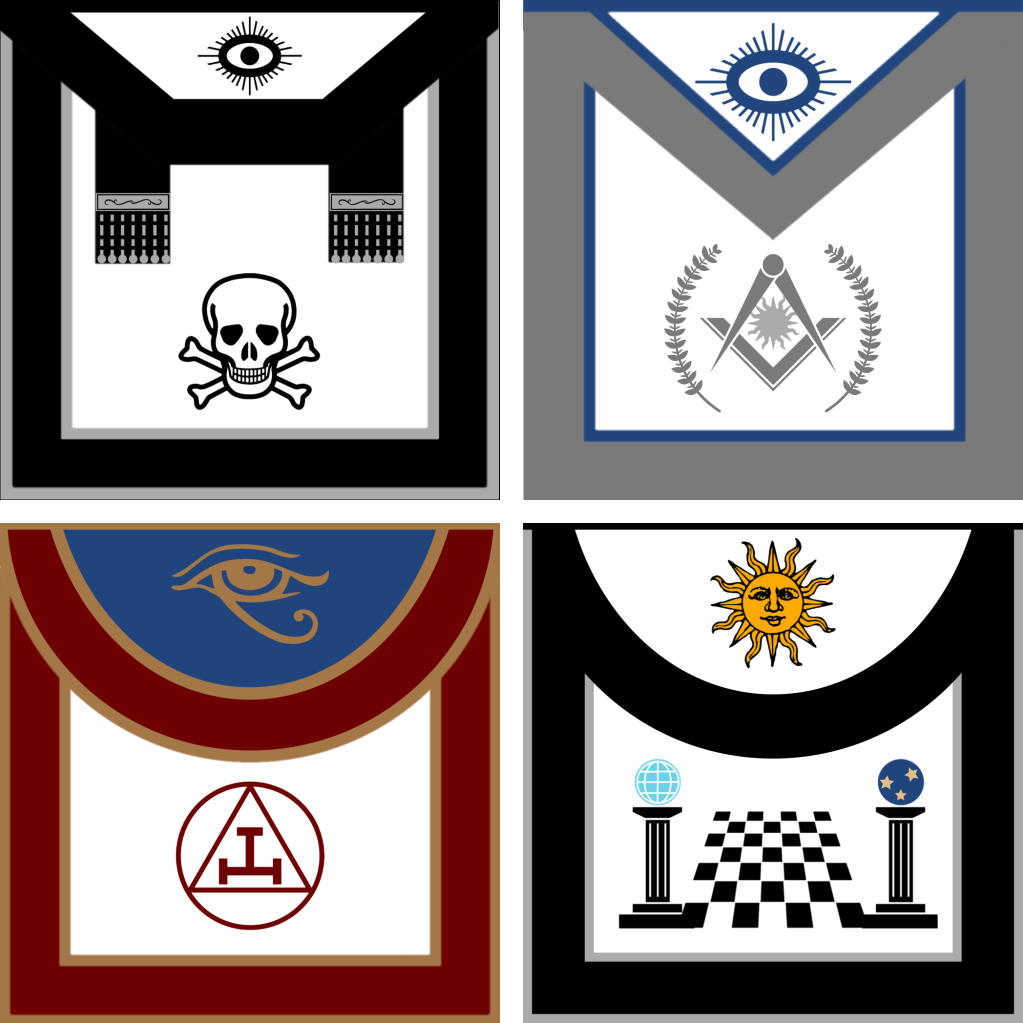



Each Tubal Cain Masonic Apron NFT JPEG includes a full size masonic apron and worldwide shipping








